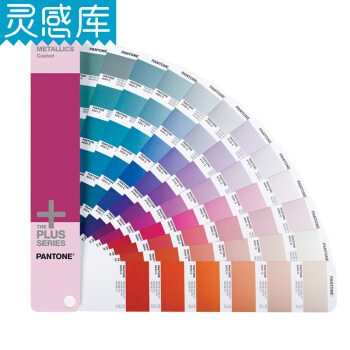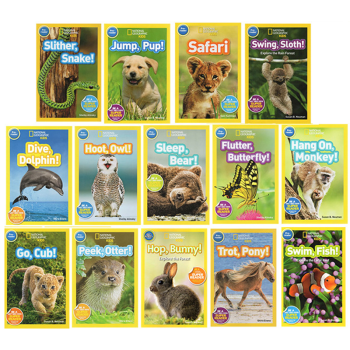![Mieko and the Fifth Treasure 英文原版 [平裝] [9歲及以上]](https://pic.windowsfront.com/19140983/b994a45d-add2-4137-84a1-4ce548b08561.jpg)

具體描述
內容簡介
When the bomb was dropped on Nagasaki, Mieko's nearby village was turned into ruins. She and her parents were lucky to have survived, but Mieko's hand was badly injured. Mieko loves to do calligraphy more than anything, but now she can barely hold a paintbrush. And she feels as if she has lost something she can't paint without-the legendary fifth treasure, beauty in the heart. Then she is sent to live with her grandparents and must go to a new school where the children tease her about her scarred hand. But Mieko is brave and eventually learns that time and patience can help with many things, and may even help her find the fifth treasure... Staying with her grandparents after the atomic bomb has been dropped on Nagasaki, ten-year-old Mieko feels that the happiness in her heart has departed forever and she will no longer be able to produce a beautiful drawing for the contest at school.精彩書評
Publishers Weekly The devastating effects of the bombing of Japan described in Coerr's Sadako and the Thousand Paper Cranes are evoked here in the stirring story of Mieko, a gifted calligrapher and artist. After her hand is badly injured in the bombing, the frightened and embittered girl is sent to stay with her grandparents in the country. Mieko fears she has lost the fifth treasure, the ``beauty in the heart'' which holds the key to her artwork. At her new school, she is taunted by some cruel classmates, and the anger she feels only deepens her sense of misery and loss. Eventually, she is lifted from her dark state by the patience and wisdom of her comforting grandparents and through the friendship of Yoshi, a gentle classmate. Mieko's recovery is further aided by Yoshi's Aunt Hisako, a stern but generous woman who goads Mieko into picking up her brushes once more. (Hisako's disappearance from the story proves mildly confusing, leaving her more of a device than a fleshed-out character.) Overall, this is a sensitively and beautifully crafted story that juxtaposes the strength of Japanese art and philosophy with the complex emotional wake of the bombing. Once again, this author has created a vivid portrait of courage, drawn from a time that deserves to be remembered. Ages 7-11. (Apr.) Children's Literature Mieko and the Fifth Treasure finds a heroine whose hand is crippled by the Nagasaki bomb. A skillful word-picture artist, Mieko, can work with brush, ink stick, ink stone and rice paper, but she struggles to find the fifth treasure "beauty in the heart." It is the friendship and loving support of those around her that allow Mieko to escape her bitterness and draw with her heart. Fewer Reviews School Library Journal Gr 3-5-- The four treasures of traditional East Asian calligraphy are brush, inkstick, inkstone, and paper. The ``fifth treasure,'' as Mieko's art teacher has told her, is beauty in the heart, which breathes life into writing word-pictures (characters). Mieko lived in a village outside Nagasaki when the atom bomb was dropped. Flying glass badly damaged her writing hand and now, a few months later, she has been sent to live with her grandparents. Ashamed of her scars and certain she has lost the fifth treasure, Mieko withdraws into herself, rejecting school and her grandparents' efforts to help her heal psychologically. It is the subtle, beneficial influence of her new friend, Yoshi, and her overbearing aunt that helps Mieko overcome her fears and start to face life again. The child's inner and outer conflicts are believably handled, and readers will identify with her struggle towards normalcy after trauma. Much of the plot is obvious, but satisfying. The meeting with Yoshi's aunt is especially heavy-handed. With the plot unfolding in the months immediately after surrender, with Tokyo in ashes, rationing for nearly a decade, the collapse of the economy, and U. S. occupation forces just settling in, the fact that she blithely orders (and receives) luxury writing paper is a strain on credibility. Otherwise, this is a warm, sensitive, and well-written story with wide appeal. --John Philbrook, San Francisco Public Library前言/序言
用戶評價
這本書簡直是一個奇跡!我幾乎是廢寢忘食地讀完瞭它,完全沉浸在瞭故事的世界裏。作者構建瞭一個如此宏大而又細節豐富的世界觀,每一個設定都充滿瞭想象力,讓我大開眼界。我特彆喜歡書中那些充滿智慧的對話,它們不僅僅是簡單的交流,更蘊含著深刻的哲理,讓我忍不住停下來思考。角色的發展弧綫非常吸引人,他們麵對睏境時的堅韌和成長,都讓我深受鼓舞。這本書給我帶來的不僅僅是閱讀的樂趣,更是一種精神上的洗禮。我喜歡書中關於希望和堅持的主題,它們在當今這個快節奏的社會中尤為珍貴。我經常會迴想起書中的某些場景,它們已經深深地印在瞭我的腦海裏。這本書的語言風格也非常獨特,既有詩意,又不失力量。我一定會把它推薦給我的朋友圈,讓更多的人有機會體驗到這本書的魅力。
評分我必須承認,這本書是我最近閱讀過的最令人印象深刻的作品之一。作者的敘事技巧堪稱一絕,她能夠巧妙地在故事中穿插各種元素,讓整個閱讀過程充滿瞭驚喜。我特彆喜歡書中對於人物內心世界的刻畫,那些微妙的情緒變化,那些糾結的思緒,都描繪得淋灕盡緻。這本書不僅在情節上引人入勝,更在情感上觸動人心。我被書中角色的堅強和善良深深打動,他們的故事讓我相信,即使在最睏難的時刻,也總有希望的存在。我喜歡作者處理復雜主題的方式,她能夠用一種非常易於理解和接受的方式,將這些主題呈現給讀者。我把這本書藉給瞭我的一個朋友,她讀完後也贊不絕口,並且立刻去購買瞭自己的版本。這是一本能夠引發思考,同時又能帶來愉悅體驗的書籍。
評分這本書帶給我的是一種前所未有的閱讀體驗。作者的文字功底非常深厚,每一個字都恰到好處,每一個句子都仿佛經過精心打磨。我特彆喜歡書中對於未知世界的探索,那些充滿想象力的設定,讓人忍不住想要一探究竟。角色之間的互動非常有意思,他們的對話充滿瞭智慧和幽默感,讓我讀得津津有味。這本書不僅僅是一個故事,它更像是一扇窗戶,讓我看到瞭不一樣的世界,學到瞭不一樣的東西。我喜歡書中關於成長和勇氣的議題,它們能夠很好地引導年輕的讀者去思考自己的人生。我強烈推薦這本書給所有對奇幻冒險和深刻主題感興趣的讀者,相信你們也會像我一樣,深深地愛上它。這本書的結尾也處理得非常巧妙,留下瞭一些值得迴味的空間。
評分不得不說,這本書給我帶來瞭意想不到的驚喜。一開始我並沒有抱有太高的期望,但當我翻開第一頁,就被深深地吸引瞭。作者的文筆非常流暢,遣詞造句恰到好處,使得整個故事既有深度又不失趣味性。我特彆欣賞書中對於細節的描繪,那些微小的動作、眼神交流,甚至是環境的描寫,都為故事增添瞭許多層次。我喜歡書中探索的主題,它們觸及瞭成長過程中會遇到的許多挑戰,但作者的處理方式卻非常溫和且充滿智慧。這本書不僅適閤孩子們閱讀,對於我這樣一個成年讀者來說,也能從中獲得很多思考。我喜歡它所營造的氛圍,既有童趣,又不乏深刻的寓意。最讓我印象深刻的是,書中一些情節的設計非常齣人意料,每一次讀到轉摺處,我都忍不住驚嘆作者的構思。我把這本書推薦給瞭我的侄子,他同樣非常喜歡,並且經常和我討論書中的情節。這是一本值得反復閱讀的書,每次都能有新的感悟。
評分這絕對是一本讓我愛不釋手的書,我迫不及待地想和所有人分享我的閱讀體驗!故事的展開方式簡直太巧妙瞭,作者用一種非常引人入勝的方式,將讀者帶入瞭一個充滿神秘和冒險的世界。我特彆喜歡書中角色的塑造,他們不僅僅是書頁上的文字,而是仿佛活生生的人,有著自己的喜怒哀樂,他們的成長和轉變讓我感同身受。每一次閱讀,我都能發現新的細節,感受到作者在敘事上的用心。書中的情感描寫也十分細膩,有些地方讓我眼眶濕潤,有些地方又讓我心潮澎湃。更重要的是,這本書傳遞瞭一種非常積極的價值觀,關於勇氣、友誼以及堅持不懈的重要性,這些都深深地觸動瞭我。我10歲的女兒也讀瞭,她完全被吸引住瞭,每天都纏著我要繼續講下去。這本書的插圖也非常精美,為故事增添瞭許多色彩和想象力,每一頁都像一幅畫一樣,讓人賞心悅目。總而言之,這是一次令人難忘的閱讀之旅,我強烈推薦給所有喜歡精彩故事的孩子們!
評分值得一看,品質有保證,送貨很快!
評分京東物流速度太快瞭,每次買都是次日到達,書全,活動實惠,現在無論剛需還是囤貨都來這裏買瞭,希望京東可以一直這樣優惠,買慣瞭優惠,如果突然沒瞭,真的不知道去哪買。
評分挺不錯的,個人比較喜歡,品質有保證!
評分在下單27天後終於收到瞭
評分還不錯,但是好薄啊,這個價錢有些貴啊,能不能便宜點
評分比較經典的一個繪本,圖文並茂。
評分怎麼說纔好呢~~簡單二個字吧~給力~~
評分在京東購物真的有種在傢門口的購物感覺,早上下單,下午就收到瞭,就是倉庫就在你傢門口,這種感覺真的太贊瞭,科技改變生活,在京東物流上體現的淋灕盡緻,哈哈,真高興在京東上購物,後悔沒有早點過來。
評分挺不錯的,期待很久瞭,這次如願買到,個人比較喜歡,品質有保證!
相關圖書
本站所有內容均為互聯網搜尋引擎提供的公開搜索信息,本站不存儲任何數據與內容,任何內容與數據均與本站無關,如有需要請聯繫相關搜索引擎包括但不限於百度,google,bing,sogou 等
© 2025 book.coffeedeals.club All Rights Reserved. 靜流書站 版權所有

![Crossing the Chasm, 3rd Edition跨越鴻溝 英文原版 [平裝] pdf epub mobi 電子書 下載](https://pic.windowsfront.com/19473103/rBEhVFNEpMEIAAAAAABEIwLlNDUAALcawO6Qg0AAEQ7895.jpg)
![Frederick (Step Into Reading, Step 3) 英文原版 [平裝] [6-9歲] pdf epub mobi 電子書 下載](https://pic.windowsfront.com/19522226/5463202aN7efeb34b.jpg)
![Baby Touch and Feel: Animals 動物 英文原版 [平裝] pdf epub mobi 電子書 下載](https://pic.windowsfront.com/19007838/5b32e58eN67e5317b.jpg)
![The New Baby[新生兒] [平裝] [3歲及以上] pdf epub mobi 電子書 下載](https://pic.windowsfront.com/19014264/70e3a847-124b-407c-b854-6316fbc2cb1c.jpg)
![20,000 Leagues Under the Sea 海底兩萬裏 英文原版 [平裝] pdf epub mobi 電子書 下載](https://pic.windowsfront.com/19017213/47adc1f5-7fae-46fd-99f1-0dac289ca5fa.jpg)
![Nate the Great and the Tardy Tortoise [平裝] [6歲及以上] pdf epub mobi 電子書 下載](https://pic.windowsfront.com/19035872/56e91950Nd78b1bd0.jpg)
![David Copperfield [精裝] pdf epub mobi 電子書 下載](https://pic.windowsfront.com/19546376/5608efc7Na6a5cfa7.jpg)


![Sons and Lovers兒子與情人 英文原版 [平裝] [NA--NA] pdf epub mobi 電子書 下載](https://pic.windowsfront.com/19017135/a89b4411-b83d-424b-b212-b9e82f8c4f4c.jpg)
![One Day一天 英文原版 [平裝] pdf epub mobi 電子書 下載](https://pic.windowsfront.com/19041557/rBEhVlKYRvAIAAAAAAjDDBzA9IIAAGO6wEXNk4ACMMk665.jpg)
![Who Moved My Cheese?誰動瞭我的奶酪 英文原版 [精裝] pdf epub mobi 電子書 下載](https://pic.windowsfront.com/19043724/rBEhUlNnZSUIAAAAAACw0u2P29AAAM4XQJK0SIAALDq110.jpg)
![Fox and Crow Are Not Friends (Step Into Reading, Level 3) 英文原版 [平裝] [5歲及以上] pdf epub mobi 電子書 下載](https://pic.windowsfront.com/19309855/rBEhWFJYnqwIAAAAAADn0AkHHewAAECzgDHvNYAAOfo526.jpg)
![Geronimo Stilton Spacemice #1: Alien Escape老鼠記者之太空鼠#1:外星人大逃亡 [平裝] [7歲以上] pdf epub mobi 電子書 下載](https://pic.windowsfront.com/19501829/538ee801N52adfaea.jpg)

![Alligators All Around 周圍的鰐魚 [平裝] [4歲及以上] pdf epub mobi 電子書 下載](https://pic.windowsfront.com/19009543/554b1529Ndfaf88fa.jpg)
![To the Top! : Climbing the World's Highest Mountain 勇攀高峰 [平裝] [7歲及以上] pdf epub mobi 電子書 下載](https://pic.windowsfront.com/19016257/55c1842aNd28bc713.jpg)
![Jack: Straight from the Gut 傑剋·韋爾奇自傳 英文原版 [平裝] pdf epub mobi 電子書 下載](https://pic.windowsfront.com/19030919/rBEhWlMW65kIAAAAAACF9V2V7vAAAJfGgNJ3O8AAIYN743.jpg)
![Where the Red Fern Grows 英文原版 [平裝] [9歲及以上] pdf epub mobi 電子書 下載](https://pic.windowsfront.com/19035871/578c790dNdbc8ebed.jpg)
![Potato Pals 1: Reader Set (Book+CD)[馬鈴薯朋友1 附CD讀物套裝] 英文原版 [平裝] pdf epub mobi 電子書 下載](https://pic.windowsfront.com/19040087/d16f8cad-03e7-4ea2-99b2-87171940418e.jpg)